D I S A S T E R L I N K S
we will never forget this.
Details are possible differend,
DO NOT hesitate to correct me.
Private Email-address is removed due to spam makers !
- - - Several shipwrecks in the past - - -
|
|
The Greece ship disasters are repeating.
There has been a stream of similar ferry casualties at the Mediterranean Sea.
The ferry Sea Diamant sank with the loss of 2 lives in 2007 April 17th
Since Express Samina sank with the loss of 78 lives in 2000 September 28th.
and the Heraklion sank with the loss of 234 lives in 1966 December 8th.
also such as the Eleana, when 25 died,
and the Chryssi Avgi, which sank with 18 fatalities.
|
|
|
MS. EXPRESS SAMINA |
|
PAROS, Greece -- Divers have found 10 more bodies from the Greek passenger ferry
which sank in the Aegean Sea on Tuesday 28-september-2000, raising the death toll
to 78, port authorities have said.
Bad weather had prevented the recovery operation since the packed Express Samina
sank after crashing onto rocks in rough seas -- the worst Greek maritime disaster
in 35 years.
The ferry's captain, first officer and two crew members have been charged with
manslaughter, neglect of duty and violation of maritime procedures.
Some 108 tourists and 365 Greek passengers have been rescued off the holiday island
of Paros since the sinking, which happened 3.2 km (two miles) from the coastline.
Greek Seamen's unions strongly dispute assurances by the ferry's operating company,
Minoan Flying Dolphin, and coast guard inspectors that the 34-year-old
Express Samina was seaworthy.
Minoan's chief legal adviser Yannis Iriotis said: "We believe the company bears no
responsibility. All the evidence points to human error shown by the crew."
One arrested crewman, first officer Anastasios Psychoyos, has claimed bad weather
had forced the vessel onto the rocks. Meanwhile, passengers say rescue efforts were
badly organised and many life vests were filled with chunks of wood.
A preliminary inquiry has focused on claims that the ship was on automatic pilot
when it ran aground.
Witnesses have claimed that some crew members were watching a soccer match
between Greece's Panathinaikos and Germany's Hamburg at the time of the disaster.
Investigators baffled Merchant Marine Minister Christos Papoutsis called the sinking "
incomprehensible and totally inexplicable."
"How can one not be outraged at a shipwreck that has cost so many lives ... in an area
that any captain sailing in the Aegean is familiar with," he said.
Investigators said they were baffled that the ship could have missed a charted islet with
a lighthouse. The ferry owner Minoan has come under further pressure after another of its passenger
ships ran aground near Paros late on Thursday.
The Express Artemis, carrying 1,081 passengers, suffered engine failure and was strand
ed for three hours at the nearby island of Naxos, before it was taken to ports near
Athens.
Last month, a hydrofoil, also owned by Minoan, caught fire and 76 passengers abandoned
the craft unharmed. The government described the sinking of the Samina as a
"national tragedy" and cancelled planned public celebrations for Greece's medal winners
at the Sydney Olympic games.
Soldiers are heroes of tragedy Four navy commanders and 17 army conscripts returning
for duty on the island of Naxos have emerged as the heroes of the tragedy.
Accounts of the young men, aged 19 to 25, risking their lives to help young children
and the elderly have contrasted sharply with survivors accusations of negligence and
neglect by the crew. One of the soldiers died while attempting to rescue passengers.
"We all did what we could � our duty," lieutenant Grigoris Bertakis, 25, told the daily
newspaper Eleftherotypia. He described how a navy commando had jumped into the
dark and stormy Aegean holding a small child. He then swam towards an elderly woman
and gave her his life jacket. "He kept reassuring the child: 'Don't be scared, I won't let
go of you'," Bertakis said.
The Defence Ministry has said it is considering medals for the men's heroic efforts.
|
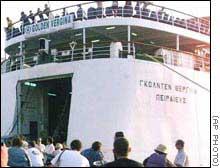
MS. Express Samina
We will never forget them!
New informations looked on the CNN site's
Also this one
Dozens die in Greek ferry disaster
Greek ferry search resumes
|
|
|
|
|
SLEIPNER
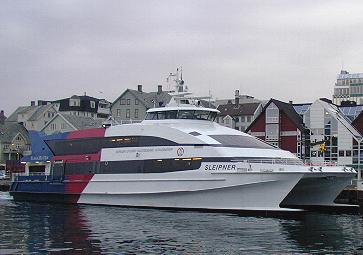
|
The smal ferry Sleipner is from the catamaran type.
This ferry was new as from august 1999 and had not a certificate to
sail under bad weather conditions, wild sea disable the ship to
sail as usually.
It was sailing with 88 people from Stavanger to Bergen (Norway).
As the result, this smal ship strand 26-11-1999 about a 100 meters from shore,
was smashed on a rock and sunk after 40 minutes at Haugesund (back into the sea).
Almost all people where dropped into the verry cold sea water and are rescue-ed.
But 18 people do not servived (2 died lather).
This is again a result of mis-management and a econic affair.
|
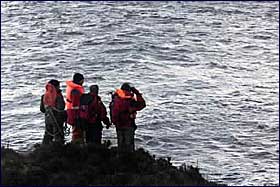



MS.Sleipner
Fast ferry safety
We will never forget them!
|
|
|
|
E S T O N I A
|
This ship had several allmost disasters and final on 28-septenber-1994
the Estonia's stops at sea after mid-night due to unknown big problems and takes 989 of crew and passengers into the very cold water.
The shortly emergency radio communications were poor and worse.
Many of them never came out of from inside and the wild sea sucks the ship and allmost all people into an irrevocable dead.
For some of them was also no servival possible.
Only 137 of people where rescued but 852 are finally died.
Investigations have never shown the truth reason and possible nothing is changed
or used for more safety until now and possible no lessons where learned.
Most of the ships-owners are resisting against the up coming maritime law changes.
(see the Espades Report : a4-0152 to Europarlement)
News 29 September 2020 :
Disaster with the "Estonia" is posible caused by collision with submarine
NEW RESEARCH
The disaster in 1994 with the ferry ship "Estonia", which killed 852 of the 989 people on board that time, was probably caused by a collision with a submarine.
Margus Kurm, in the past leader of an official investigation into the disaster, has stated this in response to a new documentary from television channel Discovery Channel.
The documentary makers of the American TV channel Discovery Channel made new images of the wreck lying at the bottom of the Baltic Sea with an underwater robot and discovered a four-meter hole in the hull that had never been seen before.
After investigation in the past, it was established as the official cause of the disaster that the bow door of the ferry ship had been knocked away by severe weather conditions (storm). Yet there have always been many doubts about what exactly happened.
The large hole that has now been discovered indicates, according to Kurm, that the "Estonia" must have collided with another vessel on that fatal night. And because the hole is in a part of the hull that was below the waterline, it almost must have been a submarine, the former researcher concludes.
It has also been suggested by others that the hole may have been created when the ship collided with a rock on the seabed, but according to Kurm, the affected part of the hull had no contact with the bottom at all.
SWEDEN
According to Kurm, a submarine may have collided with the ferry ship at the time, but it could also have happened the other way around. The Estonian former researcher does not think of the Russians as the origin of the submarine possibly involved in the disaster, by the Swedes. Sweden was engaged in military exercises in the same area at the time, he says. It is notable that in 2000 the Swedish government explicitly prohibited American divers from conducting a diving survey at the ship. The government cited burial grave rest as an argument: the wreck is respected as a resting place for the many victims who could never be recovered.
Sweden, Finland and Estonia have now announced that they will jointly investigate new information from Discovery Channel. They promise to leave the wreck alone as much as possible because of that grave rest.
The "Estonia" disaster was the worst shipping disaster since World War II.
32-year-old Dutch truck driver Tom de Klerk from Kapelle was one of the fatalities. Another Dutch truck driver was among the 137 survivors.
In response to the disaster, the International Maritime Organization introduced stricter requirements for the ro / ro ships sector, which had also experienced do to the Herald of Free Enterprise disaster seven years earlier in Belgium.
|
E S T O N I A
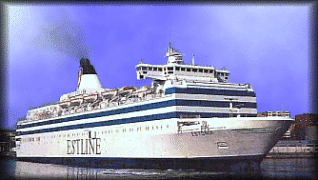

E S T O N I A guestbook
In memorial
We will never forget them !
New informations looked on the CNN site
|
|
|
P&O HERALD OF FREE ENTERPRISE
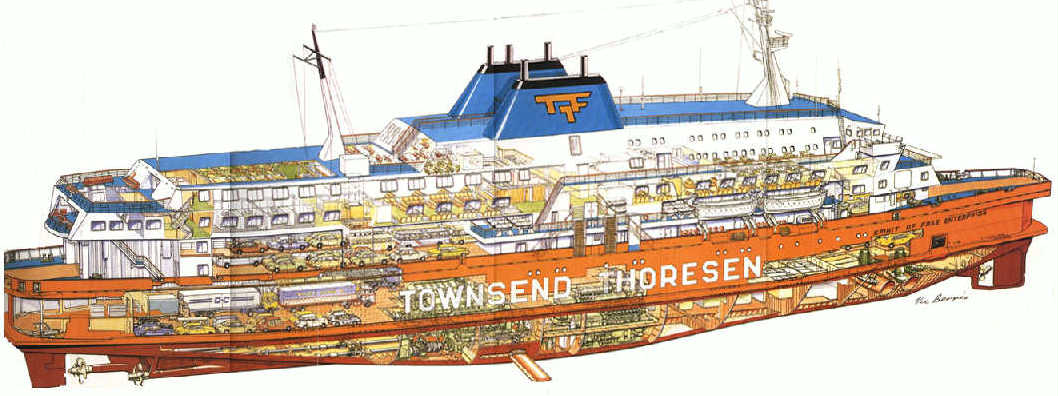
|
This ship was on 6 march 1987 going at sea in the evening and capsized
in the Zeebrugge Harbour exit / entrance. Capsized having put to sea
with its bow-doors still open. Miraculously 370 survived.
There was no sign before and 193 people where drowened in the always cold seawater. Other ware rescued fast as
posible with primitive methodes helpfull the sea was calm. But for some
the rescue was to late. Tanks to all the rescuers, but this was one of
the nearest disasters for The Netherlands. Posible nothing is changed
and posible lessons where not learned until now.
Look for the salvage of the Herald of Free Enterprise.
|
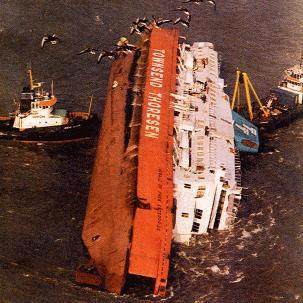
The Court
|
|
|
|
PIPER ALPHA |
July 6, 1988 Piper alpha totaly inclaps and meld down. 167 People lost there lifes.
This gas/oil and condensate production and interconnection platform
was in a major maintainance situation. Fire water (deluge) pumps where
manualy blocked. An explosion started in the condensate pump room.
Due to no responce of fixed fire water installation's a heavier explosion
followed and inniciate an uncontrolable beginning disaster.
Rapid developing problems resulting into a totally disaster.
Personel on duty realized no escape on normal way and jumped into the cold sea.
Many people, in the accomodation unknown wat was going to happen, fall
with this unit into the sea and they lost ther lives also.
The study made was resulting into recommandations for this industry,
fire pumps are coverd with divier protections and pumps will no longer
bypassed for longer periods, but possible nothing is realy changed,
economic situations and cost cuttings are the hold up of (safety)
modifications as required.
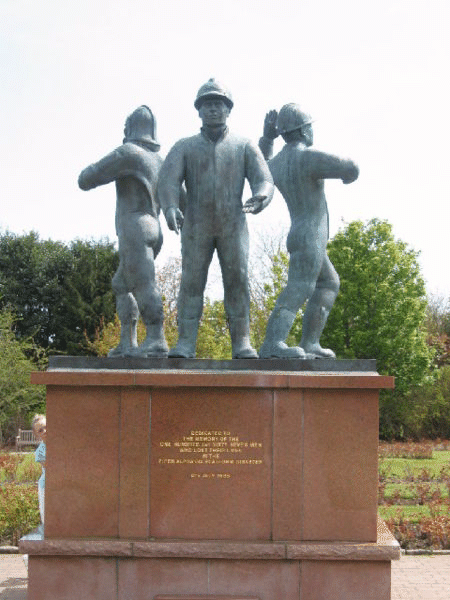
|

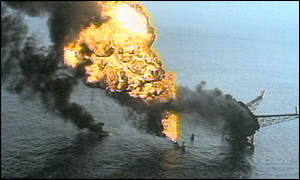
Wikipedia
P I P E R A L P H A
The original site and whole story.
video
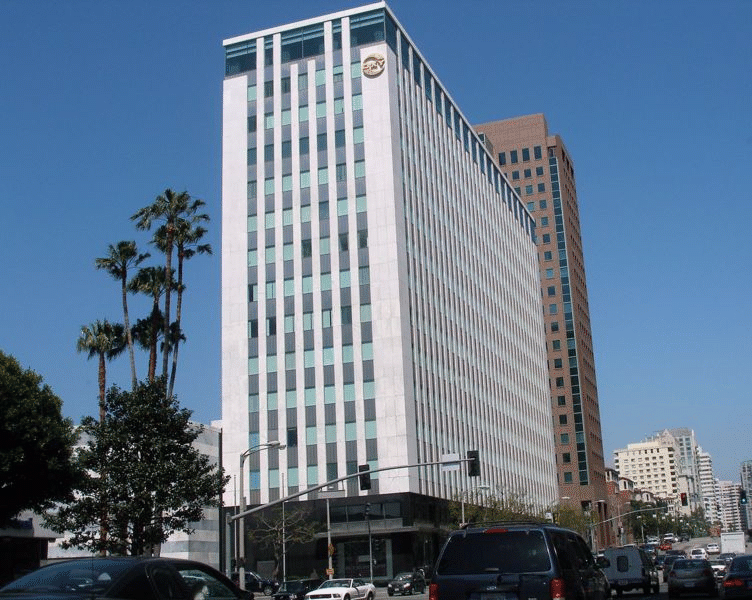
|
|
|
|
OCEAN RANGER |
The February 6 1982 Incident
The Ocean Ranger developed a 6 degree port heel while taking on liquid cargo.
It was found that Capt. Hauss had been pumping out port tank #14 with the sea-chest
valve open resulting in rapid inflow of sea water which the pumps could not counteract.
This confirmed that the Master did not understand the ballast control system.
Thompson was aware of this and told Hauss not to operate the ballast system again
Introduction
The Event
On February 15, 1982, the semi-submersible drilling rig Ocean Ranger capsized and
sank on the Grand Banks of Newfoundland, 170 miles east of St. Johns.
The Consequences
The entire crew of 84 died, 69 of whom were Canadian.
Emergency training
None of crew had marine training, eg. To operate the lifeboats
The follow-up
A Royal Commission was established by the Canadian and Newfoundland governments
to investigate the cause of the accident and make recommendations.
The findings were:
1. Engineering design and construction faults
2. Operations/management weaknesses
3. Inspection and regulation by U.S. and Canadian government agencies was ineffective
Scale model tests
At a draft of 93 ft and a bow trim of 6 degrees, flooding via the chainlockers commenced,
progressing to capsize.
Conclusions-
Primary cause of the accident:
Breaking of the portlight
� design/manufacture of the portlight was deficient
� operating practice to close the deadlight
� design/manufacture of the panel not waterproof
Secondary cause:
Ballast control operator incapable
Culminating cause of the tragedy:
The life-saving facilities were useless
Responsibility system failure:
The system failed to provide facilities and training
Conclusions are Management
ODECO:
� Failed to provide qualified marine personnel, had not replaced the lifeboats
� Did not have a valid 'Certificate of Inspection" at the time of the sinking
� Failed to provide survival suits
MOBIL:
� Failed to ensure the crew had proper training
The Sinking (as deduced from communications)
9:00 pm Sunday -Ocean Ranger called its supply ship. The ship was 7 miles away
1:00 am Monday -Ocean Ranger to MOBIL shorebase "listing to bow 8-10 ft,
attempting to isolate problem
1:05 am Monday -Ocean Ranger to supply ship- "come to close standby"
1:09am Monday -Ocean Ranger SOS to US Coast Guard
(last communication)
1:30 am Monday -Ocean Ranger to Mobil shorebase "crew going to lifeboat stations"
3:38 am Monday- Ocean Ranger disappeared from the radar screen
Emergency Response
� Ships
- Seaforth Highlander arrived at the site at 2:00 am. It was unable to rescue anyone
from the water.
� Aircraft
-Universal Helicopters were delayed by wind and refueling. Arrived on site at 4:35 am,
not equipped with rescue gear, could only observe and direct.
-Search and Rescue helicopters delayed by weather until 6:30 am. Arrived at site at
9:35 am. No rescues.
� Conclusion
-The rescue efforts were unsuccessful in recovering any survivors. Over the next
4 days, 22 bodies, 2 lifeboats and 6 liferafts were recovered.
|
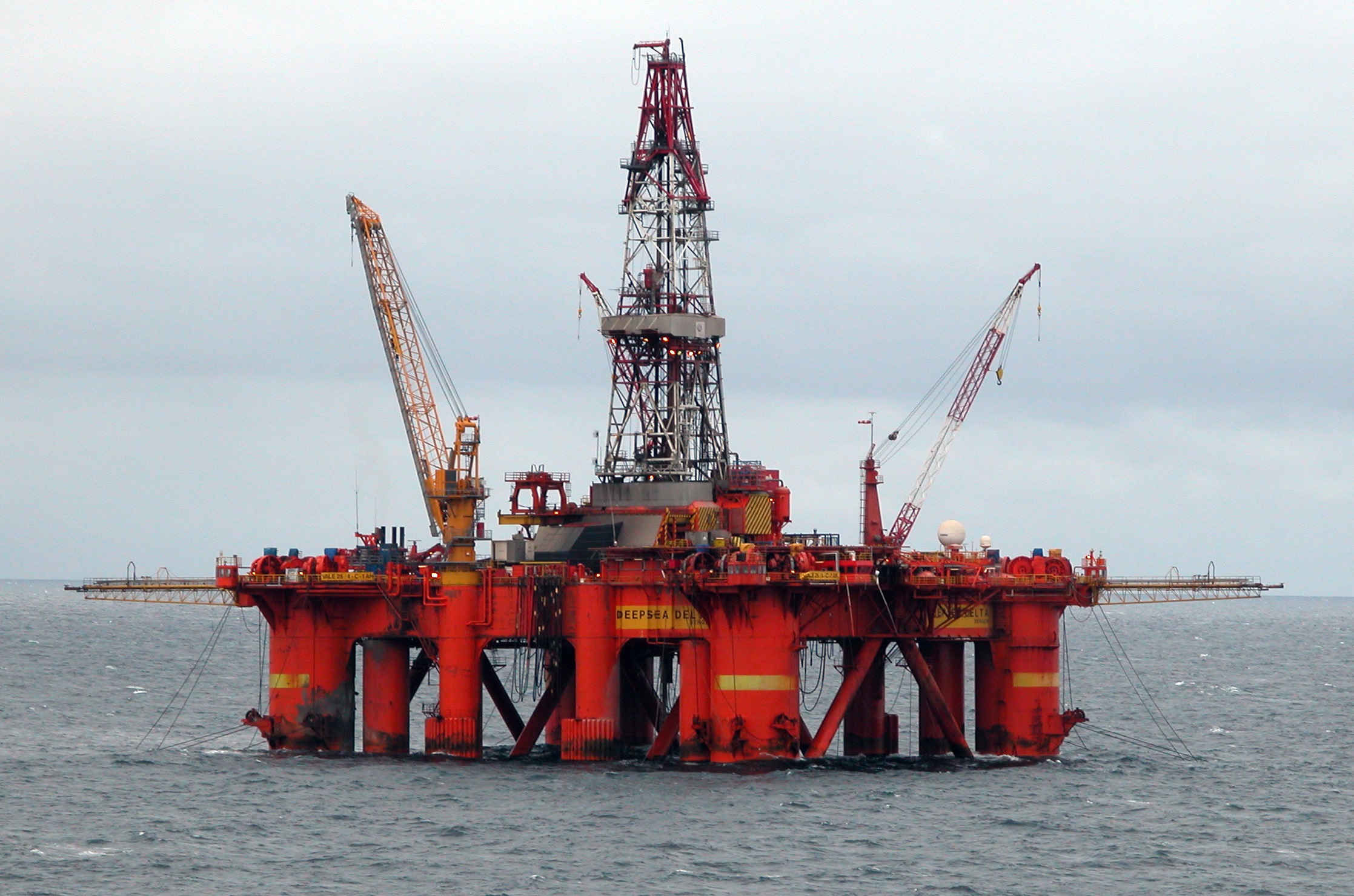
O C E A N R A N G E R
A R C H I V E
The original site.
|
|
|
|
ALEXANDER L. KIELLAND |
|
FALK (FALK International) is a non-profit organization founded
with the objective of promoting new police investigation of the "Alexander
L. Kielland" disaster and improved public legal rights.
The offshore accomodation platform Alexander L. Kielland
capsized on the Ekofisk field in the Norwegian sector of the North Sea
on March 27 1980. 123 people perished among them 27 UK and 2 US citizens.
The Norwegian Labour government in charge at the time, appointed the following
day a committee to investigate the cause of the disaster.
The Committee presented their report one year later in March 1981. The
report concluded that the cause of the disaster was a fatigue crack in
one of the six bracings (bracing D-6) connecting the broken away D-leg
to the rest of the platform. In the Summary of their report on page 11
the Committee, however, states they never looked into any other possible
cause to the disaster as f.i. explosion.
After the uprighting of the capsized rig in 1983,
FALK's president Ole. C. Ostlund was involved in the inspection of the rig on behalf of a group
of relatives. Findings strongly indicated that an explosion had taken place
in one of the bracings (bracing D-4) adjacent to the D-6 bracing with the
fatigue crack, causing the platform to collapse. Further metallurgical
testing and research substantiates that failure of the D-4 bracing was
caused by explosives placed inside the upper part of the bracing by human
act.
Several requests have in vain been placed asking Norwegian jurisdicial
authorities to resume investigation of the "Kielland"
disaster based upon sabotage as the real cause of the disaster.
FALK strongly advocates such investigation to take place by Norwegian
Police with assistance from FBI and Scotland Yard.
Presentations have been made to representatives from FBI and Scotland
Yard. The official posission is as stated in letter from the US Embassy
in London that they can not assist without a formal request from Norwegian
authorities.
FALK is asking for your support to put pressure on the Norwegian
Government making them to take proper action in this case, and stop violating
Democratic rights and Public legal security in Norway.
|

THE SABOTAGE AGAINST
THE OFFSHORE ACCOMODATION
PLATFORM ALEXANDER L. KIELLAND.
The original site's.
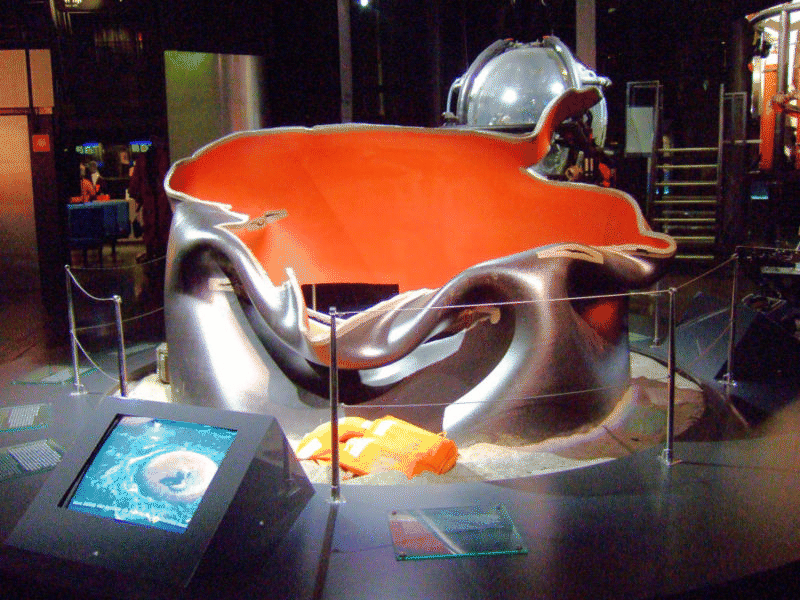 FALK International
FALK International
ORGANISATION F.A.L.K.
THE RIG : structures
FALK NEWSLETTERS:
WHAT'S NEW ! 10-1998
The Cover Operation.
The Sabotage.
|
|
|
SLEIPNER PLATFORM
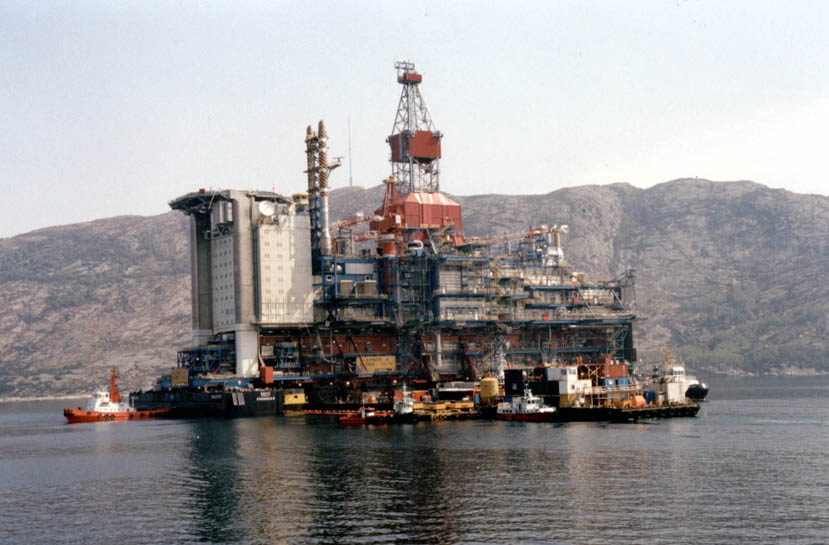
|
The sinking of the Sleipner A offshore platform
Excerpted from SINTEF,
Civil and Environmental Engineering:
The Sleipner A platform produces oil and gas in the North Sea and is supported
on the seabed at a water depth of 82 m. It is a Condeep type platform with a
concrete gravity base structure consisting of 24 cells and with a total base
area of 16 000 m2. Four cells are elongated to shafts supporting the platform
deck. The first concrete base structure for Sleipner A sprang a leak and sank
under a controlled ballasting operation during preparation for deck mating in
Gandsfjorden outside Stavanger, Norway on 23 August 1991.
Immediately after the accident, the owner of the platform, Statoil, a Norwegian
oil company appointed an investigation group, and SINTEF was contracted to be
the technical advisor for this group.
The investigation into the accident is described in 16 reports...
The conclusion of the investigation was that the loss was caused by a failure
in a cell wall, resulting in a serious crack and a leakage that the pumps were
not able to cope with. The wall failed as a result of a combination of a serious
error in the finite element analysis and insufficient anchorage of the
reinforcement in a critical zone.
A better idea of what was involved can be obtained from this photo and sketch
of the platform. The top deck weighs 57,000 tons, and provides accommodation for
about 200 people and support for drilling equipment weighing about 40,000 tons.
When the first model sank in August 1991, the crash caused a seismic event
registering 3.0 on t he Richter scal e, and left noth ing but a pile of debris at
220m of dep th. The failure involved a total economic loss of about $700 million.
The 24 cells and 4 shafts referred to above are shown to the left while at the sea
surface. The cells are 12m in diameter. The cell wall failure was traced to a
tricell, a triangular concrete frame placed where the cells meet. At right one
is pictured undergoing failure testing. The post accident investigation traced
the error to inaccurate finite element approximation of the linear elastic model
of the tricell (using the popular finite element program NASTRAN). The shear
stresses were underestimated by 47%, leading to insufficient design. In particular,
certain concrete walls were not thick enough. More careful finite element analysis,
made after the accident, predicted that failure would occur with this design at a
depth of 62m, which matches well with the actual occurrence at 65m.
Further information can be found in the series of reports available for purchase
from SINTEF and in an article from Concrete International, August 1997, available
online in an abridged version from Engineers Australia.
|
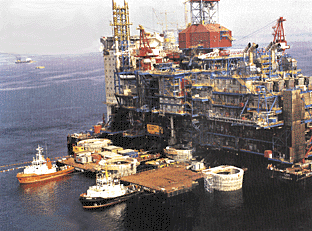
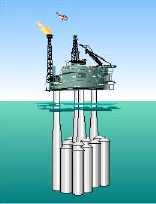
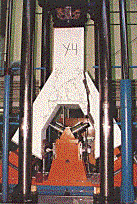
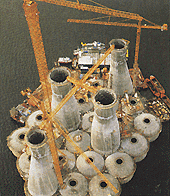
Reports for main topic
SLEIPNER A
We will never forget them!
|
|
|
|
|
|
Selected Links |
|
|